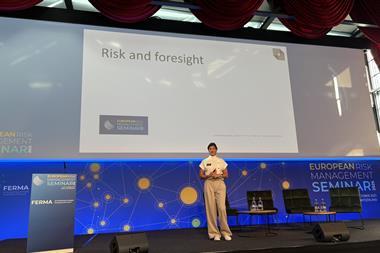Will insurers swipe right on covering dating apps’ unique risks? Chantal Kapani explores the threat landscape and the options for businesses looking for cover.
In 1997, Steven Haase, who served as an insurance broker and senior vice president at Hamilton Dorsey Alston Co, collaborated with AIG to establish the first internet security liability policy.
The policy was designed for information technology firms overseeing networks. However, the 21st century witnessed a digital transformation that compelled the cyber industry to adjust.

Simultaneously, the business of finding love online boomed, culminating in the widespread use of dating apps, which are now considered the standard approach to making romantic connections.
However, this transition has also sparked new challenges in the realm of cyber security.
Not your type?
Rather than swiping right on this market opportunity, many insurance brokers are reluctant to source cover for such platforms.
For instance, Abdul Anwar, creator of the university dating app Lboro Circle and a student at Loughborough University, told sister publication Insurance Times that he struggled to find insurance for his app, which launched as a beta program in February 2023.
Michael Brunero, head of technology, media and intellectual property (IP) at CFC, explained that insurance brokers might hesitate to provide coverage for dating apps because understanding the “unique risks associated with these apps” often necessitates the “expertise of a specialist technology broker”.
For example, to obtain the necessary insurance coverage, Anwar had to tap into Biba’s Find Insurance Service, launched in April 2012. He was “matched” with LBH Insurance, which secured insurance for the app via CFC Underwriting.
The “unique risks associated with these apps” often necessitates the “expertise of a specialist technology broker”
Despite trepidation from insurance brokers, CFC has demonstrated an appetite to insure dating apps, citing that it has already insured several “now well-known dating apps”.
In 2009, CFC launched its social media policy, encompassing coverage for a range of entities, from social network and community sites to media-sharing websites, app developers, bloggers, and online gaming companies.
However, Brunero admitted that offering insurance for dating apps “doesn’t represent a huge part” of the company’s technology and media book of business.
“We have written coverage of a number [of dating apps] over the years, [exceeding 50 instances].
“[However], this category constitutes only a subset of our overall social media portfolio, which represents approximately 15% of the company’s total portfolio.”
Unique risks
CFC explained that offering insurance coverage for dating apps can also be a “challenging area,” given the exposure to a wide range of risks from various sources.
For instance, geolocation technology plays a pivotal role in determining the real-world location of devices through the use of global positioning systems (GPS) and Wi-Fi data.
However, despite the numerous benefits, its use also raised concerns regarding privacy and user safety. There is a risk of breaching a user’s location and this information can potentially be exploited to identify a user’s home address and track their movements.
A notable incident, reported by the BBC on 19 January 2015, involved cyber security experts from Synack discovering a vulnerability in one such app, underscoring the potential risks.
Cyber attackers exploited a feature disclosing user distances and used multiple location-based requests to triangulate a person’s exact location.
Bodily injury arising from the conduct of dating app platforms is a “critical area” of coverage
Brunero noted that the breach of a user’s location not only posed privacy risks, but opened “potentially vulnerable” individuals to the risk of “physical abuse,” potentially leading to personal injury claims.
He cited a case that occurred in the United States in 2019, where an individual was harassed by their ex-partner acting as a catfish (a person who creates a deceptive or false online persona to establish relationships with others) on the dating platform.
The user sought to file a product liability case against the platform and the claim asserted defects in design and a failure to police users.
Although the app successfully defended itself in this instance, Brunero pointed out that the substantial costs incurred in addressing novel cases like these would have been “significant”.
Bodily injury arising from the conduct of dating app platforms is a “critical area” of coverage, Brunero added, which is often “overlooked” and not included as standard in many policies.
Fit for purpose?
Brunero explained that bodily injury arising from dating app platforms was overlooked in standard policies because “many insurance policies were developed before modern technologies such as dating apps, so they are not fit for purpose”.
For example, errors and omissions (E&O) policies, which usually cover financial losses, may not be suitable for dating apps. These apps could potentially be held responsible, or at least accused of being responsible, for physical injuries to people.
“So, a good insurance policy for these kinds of businesses needs to consider these new types of risks,” said Brunero.
“Many insurance policies were developed before modern technologies such as dating apps, so they are not fit for purpose”
He pointed out that, in scenarios involving bodily injury related to dating app platforms or other technology services, businesses may need to explore “bespoke” liability coverage tailored to the “unique risks” associated with their industry and services.
For example, CFC’s social media policy encompasses coverage for bodily injury and property damages up to the full policy limit. Moreover, the policy incorporates tailored package policies to “reduce gaps and overlaps in coverage”.
“Dating apps are exposed from various angles, creating a greater appetite to offer package policies. In our view, this is crucial for providing tailor-made IP protection,” said Brunero.
This article first appeared on sister publication Insurance Times.



















No comments yet